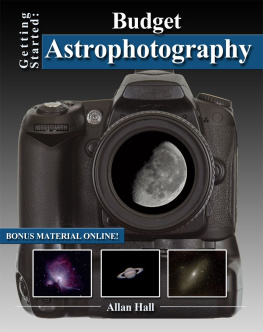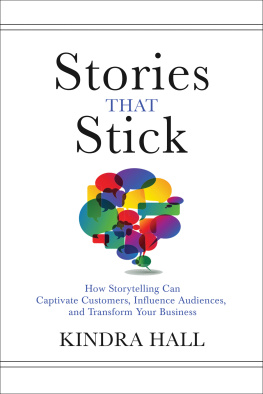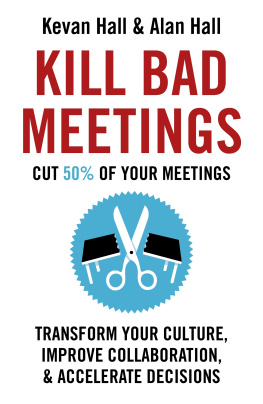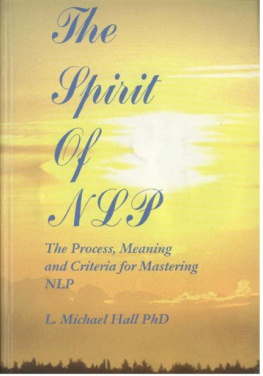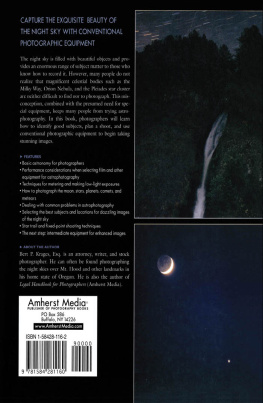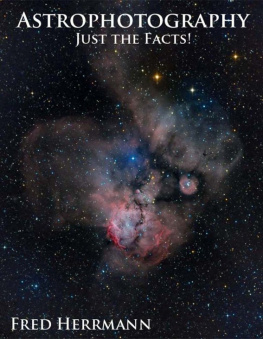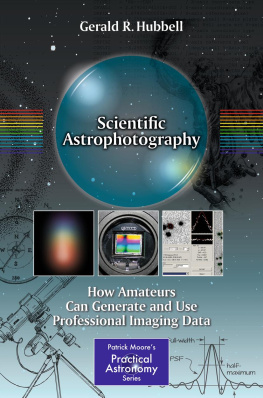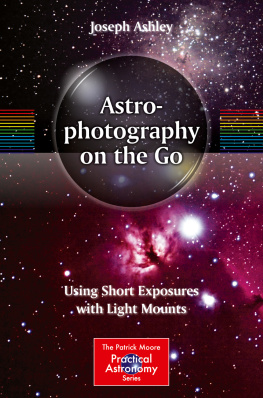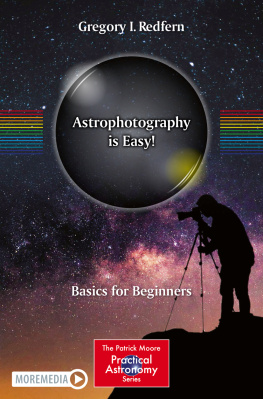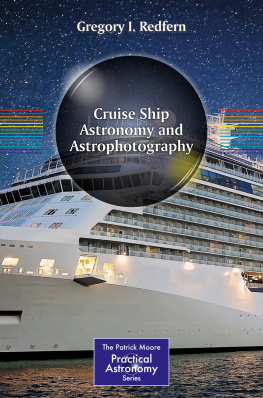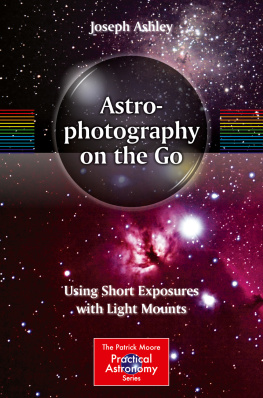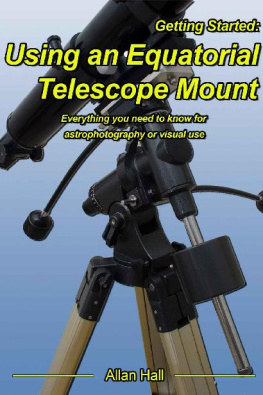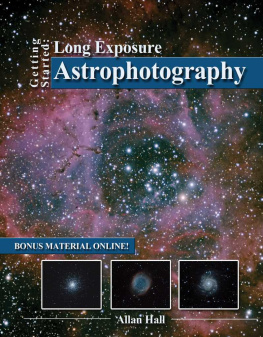
Copyright 2014 by Allan Hall
10 9 8 7 6 5 4 3 2 1
All rights reserved. No part of this publication may be reproduced, distributed, or transmitted in any form or by any means, including photocopying, recording, or other electronic or mechanical methods, without the prior written permission of the publisher, except in the case of brief quotations embodied in critical reviews and certain other noncommercial uses permitted by copyright law. For permission requests, write to the publisher, addressed Attention: Permissions Coordinator, at the address below.
Allan Hall
1614 Woodland Lane
Huntsville, TX 77340
www.allans-stuff.com/bap/
Although the author and publisher have made every effort to ensure that the information in this book was correct at press time, the author and publisher do not assume and hereby disclaim any liability to any party for any loss, damage, or disruption caused by errors or omissions, whether such errors or omissions result from negligence, accident, or any other cause.
Any trademarks, service marks, product names or named features are assumed to be the property of their respective owners, and are used only for reference. There is no implied endorsement if we use one of these terms.
'Adobe'. Adobe Photoshop, and Adobe Photoshop Lightroom are either registered trademarks or trademarks of Adobe Systems Incorporated in the United States and/or other countries.
All cover images: Copyright Allan Hall
Section title page images: Copyright Allan Hall
Acknowledgements:
The following persons/companies have graciously agreed to allow reprints of their screens in this publication.
Adobe product screenshot(s) reprinted with permission from Adobe Systems Incorporated.
Star charts printed from AstroPlanner V2, used with permission, Paul Rodman, Author
AstroPlanner & AstroAid screenshots used with permission, Paul Rodman, Author
Stellarium screenshots used with permission, Alexander Wolf, Developer
Star Walk screenshots used with permission, Olga Shtaub, Vito Technology Inc.
Clear Sky Chart screenshot used with permission, Attilla Danko, Author
Images Plus screenshots used with permission, Mike Unsold, Author
C2A screenshots used with permission, Philippe Deverchere, Author
Deep Sky Stacker screenshots used with permission, Luc Coiffier, Author
DSLRShutter/PHD screenshots used with permission, Craig Stark, Author
Orion Telescopes logos and brand names appear with permission, Mary Caballo, Orion Inc.
SkySafari screenshots used with permission, Tim DeBenedictis, Owner
NASA HD App screenshots used with permission, NASA App Team
Registax screenshots used with permission, Cor Garden
SharpCap screenshots used with permission, Robin Glover
A Better Camera screenshots used with permission, Sergey Malykhin
Gorillacam screenshots used with permission, Stephen Cheng
Table of Contents
Introduction
Its hard not to be impressed when you look at a picture of a beautiful nebula or galaxy in a magazine or online. If you are impressed enough, you may want to take up astronomy as a hobby. That seems to lead a great number of people to look for ways to capture their own images of celestial objects. In todays instant gratification society it is a bitter pill to swallow when we hear that you cant just point your camera up and get a picture of a galaxy. So what do we do?
You have already taken the first step in buying this book! Knowledge is the first great hurdle in astrophotography, the second was always the cost. Fortunately, in todays digital age and worldwide market it has never been cheaper to capture images of the heavens.
I cant begin to tell you how many times I have seen people with a genuine desire to try their hand at astrophotography hear about the thousands, or tens of thousands of dollars in equipment an astrophotographer has spent to get their images and see that gleam in their eye fade and disappear. But you dont have to spend that to get started, or for that matter to get some pretty impressive images. This book will show you how.
Every piece of equipment and software I talk about is readily available. I try to steer clear of solutions for only one particular thing (one brand of camera for example) and give you choices. Much of what I discuss is more about getting you to understand the how and why of the techniques rather than a simple buy this and click here approach, although it can certainly be used that way.
A large portion of this book is dedicated to do-it-yourself (DIY) projects to help you save even more money with a wide range of projects. There are some things however that you just really need to spend the money on even if it hurts, like a good light pollution filter which we will discuss later.
I originally wrote my first book, Getting Started: Long Exposure Astrophotography, as a set of pamphlets designed to cover all aspects of astrophotography. As I learned more on the subject, it quickly became apparent that there was so much information out there, and so much of it was aimed at specific types of astrophotography, that I needed to split things into different areas. That was the birth of this book.
Budgets are a very personal thing, and although the title of this book will mean different things to different people I have tried to provide some options for just about everyone. There are some images that can be done with nothing more than a digital camera, computer and a stand or tripod. Still more advanced methods require a little more investment. No image in this book used more than $1,000.00 of total equipment including camera, telescope, adapters, software, etc. The exception here is that I assume you already have some kind of computer for processing the images you capture. No other assumptions are made.
Astrophotography is like most things in life where you get out of it pretty much what you put into it. That doesnt necessarily mean money however. Lots of hard work, a few tricks and a little knowledge can be substituted for money in some instances and hopefully that is where this book will come in handy.
The book is written in three basic sections:
Understanding is the title of the first section and it leads you to understanding what you are trying to do, how to go about it, and what you may need in equipment and software to be able to do it. This is by far the most important section of the book.
The title of the second section is Doing, and it is more of a how-to section showing you how to accomplish specific steps in the process that is astrophotography.
Third and finally is the section entitled Building which is the Do-It-Yourself section where you can see projects for modifying and building things to help in your new found hobby.
Be sure to visit the website for the book at:
http://www.allans-stuff.com/bap
Special thanks go out to my wife Sue Ann Delk, Rusty Hill, Rory Glasgow, David Tomlin, Aaron Clevenson, Dan Davidson, Mary Moore and Wendy at Home Depot for their help with the book. Without them, this would be far less than it is.
Section 1: Understanding

Problems and solutions
I am assuming you bought this book to take images of objects in the sky. Anyone can just point a camera at the moon, click the shutter, and say they took an astrophoto. I am willing to bet you want to do more.
In astrophotography there are many ways to do many things; it is as diverse a hobby as I have ever encountered. What I present here is some of the problems I ran into and the solutions that worked for me. That is not to say they are the best or only way to do things, in fact, I am sure there are different ways to do most of what I present. Discussing these problems and the solutions I came up with hopefully will help you when you run into similar situations.
Next page
